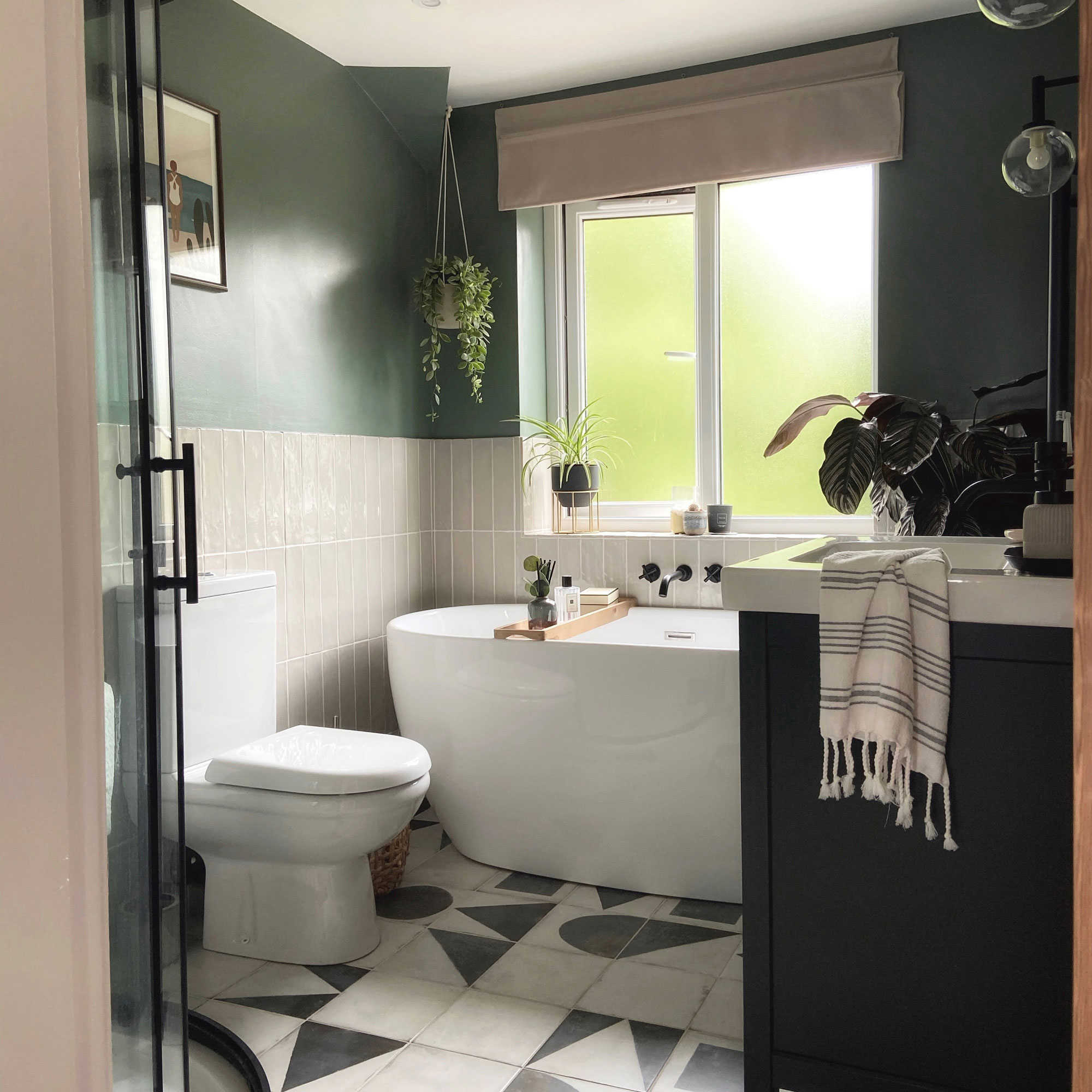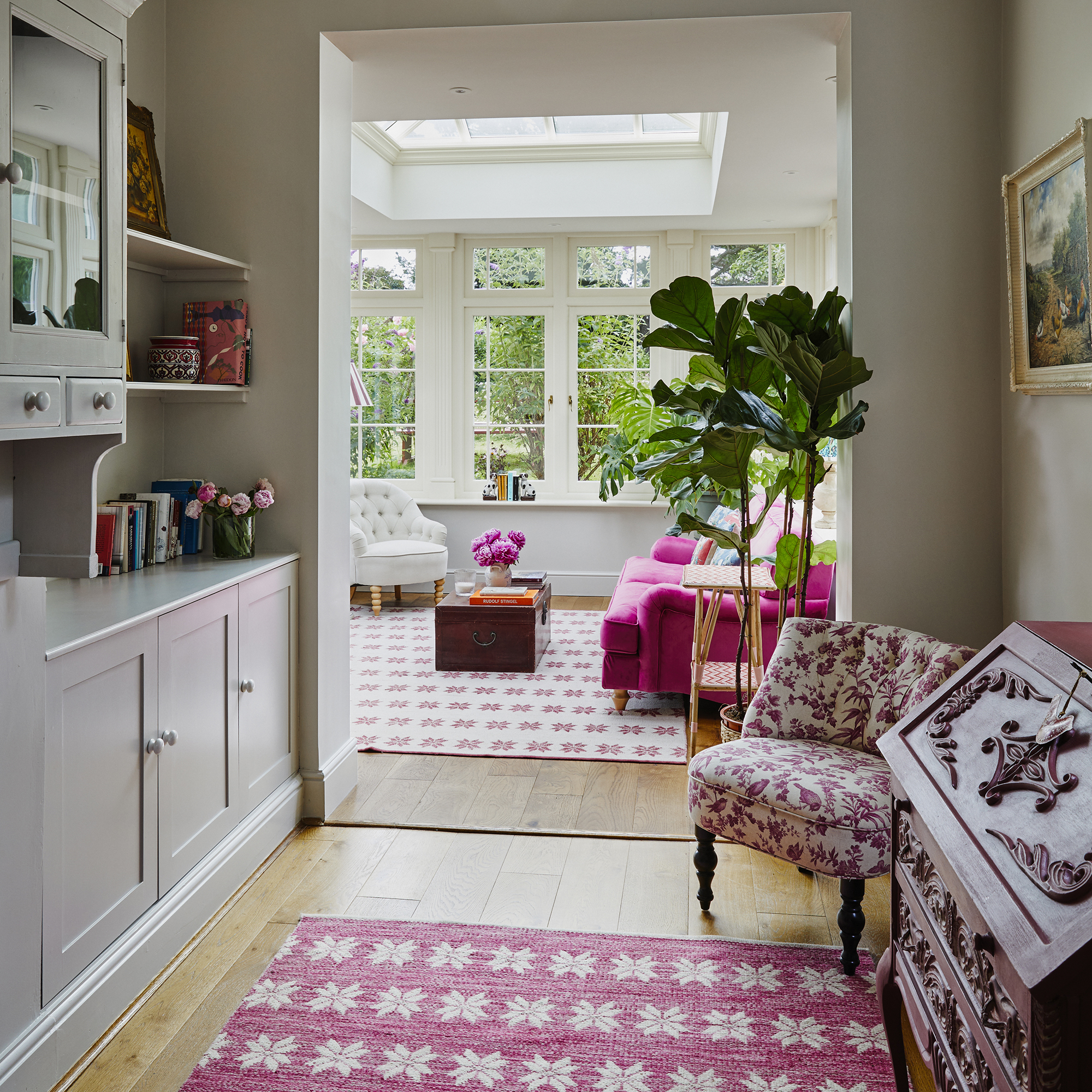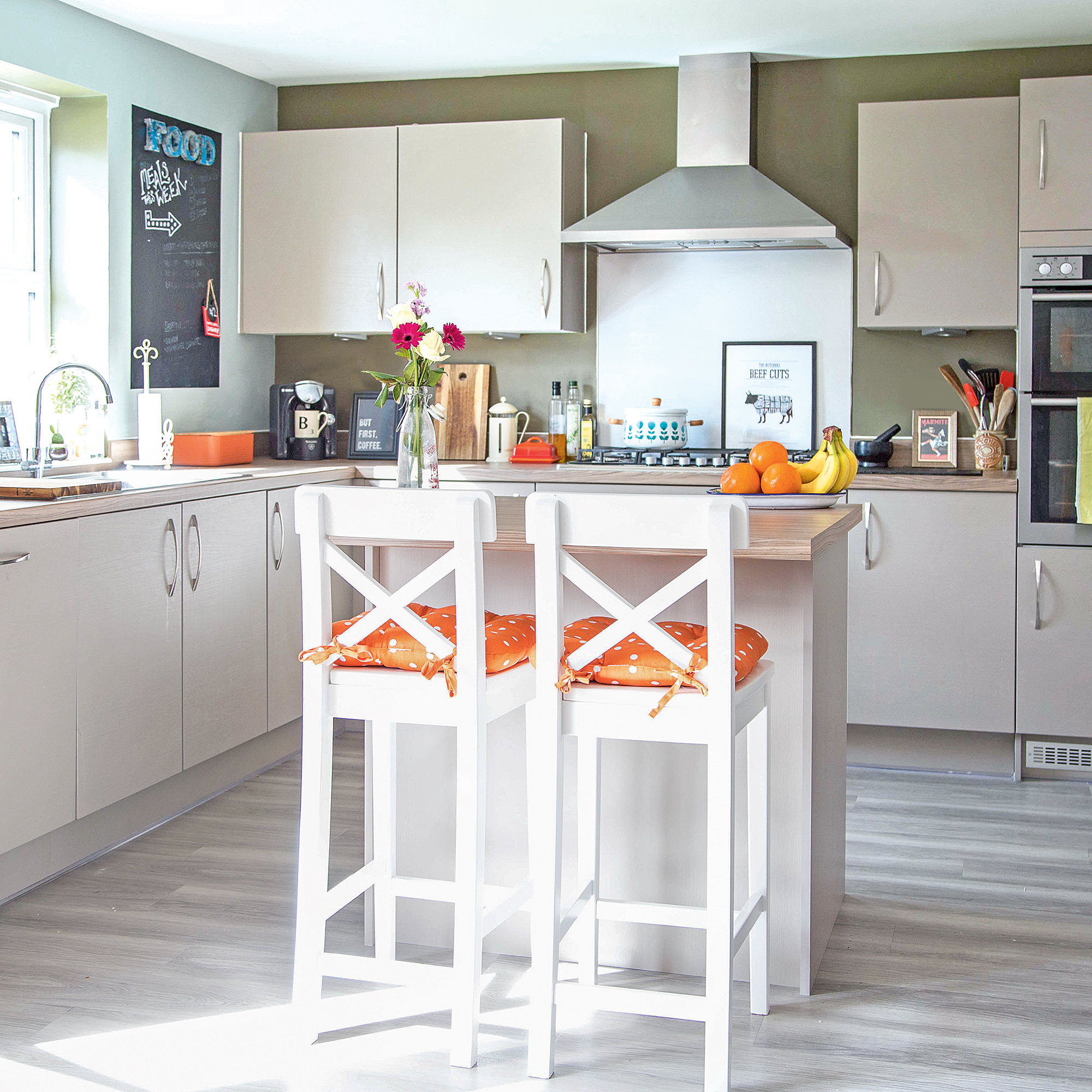
Whether you already have underfloor heating or you’re weighing up whether it’s worth it, knowing the ins and outs of this heating system is key. And if you want to keep your home toasty and warm in the winter, it’s important to understand what temperature underfloor heating should be set at.
Yes, while it’s not an essential addition to a home if you already have a working central heating system, underfloor heating has become a popular way to keep your house warm in winter. Heating your home from under your feet, it then radiates heat around a room and works alongside your other heating appliances to maintain a constant temperature in your home. You do need to set the system up, though.
And while we’d love to tell you that there was a once-size-fits-all answer to the question, ‘What temperature should underfloor heating be set at?’ that just wouldn’t be truthful. That’s why we’ve spoken to heating experts to determine the perfect temperature for you, your home, and your flooring type.
General temperature guidelines for underfloor heating
Just as choosing the perfect time to turn your heating on for the first time in autumn or winter is a very personal choice, so is choosing the temperature you can feel under your feet. But determining what temperature to set your underfloor heating at is also determined by your home. Especially if you want your underfloor heating system to run efficiently.
As David Johnston, technical and category manager at The Underfloor Heating Store explains, ‘The optimal temperature for underfloor heating varies depending on the room and flooring type.’
This is echoed by Nicholas Auckland, a heating expert at Trade Radiators. ‘The temperature you set your underfloor heating at really all depends on a variety of factors, including your heating system, the type of underfloor heating you have, how well insulated your home is, where the underfloor heating is located, and the materials used on the flooring.’

However, you can follow some general guidelines if you’re unsure where to start. Nicholas advises:
- ‘A temperature range of 21-25°C is recommended for the underfloor heating to be most comfortable, and this is correct for the majority of underfloor home heating.
- 21-22°C is ideal for well-insulated homes.
- 23-25°C is ideal for larger rooms and less well-insulated homes.’
But if you want to ensure the longevity of your flooring and avoid damage, it's best to tailor your underfloor heating to your specific flooring type.
As Candice Carmichael, gas & heating engineer at TaskHer explains, ‘When it comes to flooring type, the heavier the material, the higher the temperature it can tolerate as it will take longer to warm.’
The best temperature for tile and stone floors

If underfloor heating won in the underfloor heating vs radiator debate for your bathroom or kitchen, there’s a high chance that this heating system has been fitted underneath tiled or stone flooring.
And as we all know, there’s nothing worse than stepping out of a hot shower and onto a cold tiled floor (unless you’ve chosen one of the best alternatives to a bath mat, of course), this underfloor heating can keep your tiles at a constant temperature no matter the time of day. But what temperature should that be?
Nicholas says, ‘Tile and stone flooring can handle the higher temperatures well, so 22-25°C works perfectly and will help to keep your room nice and warm.’
The best temperature for wooden floors

While cleaning your wooden flooring is important, so is keeping your wooden flooring in one piece. And that’s why you must be careful when setting the temperature of your underfloor heating for wooden floors. After all, one wrong move and you could ruin your wooden flooring idea.
Nicholas warns, ‘Wooden flooring should never exceed around 27°C, as at this temperature, it could start warping, which could result in your floor needing to be replaced and lots of other extra costs. Around 21-23°C is a safe temperature to ensure there's no damage caused.’
So, keep an eye on your thermostat and always keep the temperature lower if you’re worried.
The best temperature for laminate floors

Laminate flooring is often seen as a budget alternative to wood flooring, and that’s before we mention how easy it is to clean laminate. However, like its less affordable counterpart, laminate can’t handle underfloor heating as much as other flooring options.
Nicholas says, ‘Laminate or vinyl flooring is less tolerable of high temperatures than wooden, so 21-22°C should be ideal.’
In fact, you should always check with your laminate manufacturer before installing underfloor heating underneath, as it may be that it’s not compatible with this heating system.
The best temperature for carpets

Understanding how to choose carpet is hard enough. But if you want to add underfloor heating into the mix, you also need to work out whether you can install underfloor heating under carpet.
Typically, you can install underfloor heating under carpet - but you need to get it just right. Nicholas says, ‘If you have carpet flooring, then you'll need to make sure that the carpet you have (and its underlay) is suitable for use with underfloor heating.
He adds, ‘If it is, it'll be able to soak up a lot of heat as carpet is generally an insulator in itself. The higher end of the temperature scale would be good for carpet - around 24-25°C.’
How to save money with underfloor heating
With rising energy bills hitting families across the UK, you may start to question whether your underfloor heating is really worth it. But underfloor heating doesn’t have to cost you a fortune, and there are ways to save money when using underfloor heating.
Nicholas says, ‘If you want to save as much as possible but keep a comfortable temperature, then 21-22°C would be recommended. My recommendation is to start low and build up in temperature if you feel is best. Each extra degree could add up to 10% to your energy bills, so staying low if you're money-conscious is best.’
If you have a smart meter or your underfloor heating is linked to your smart heating system, you can then keep track of how much your underfloor heating is costing you. If you feel you have room in the bank to crank it up a degree, you can do that. If you feel as though you’re spending too much, you can then reduce it slightly.
Of course, there’s not much point in having underfloor heating if your home isn’t properly insulated - and one of the best ways to save money when using underfloor heating is to invest in efficient home insulation. Otherwise, the underfloor heat you produce will simply leak out of your home.

‘For your underfloor heating to be most beneficial when at a lower temperature, proper insulation in your home is recommended. This means proper insulation in your floors, walls, windows, doors, ceiling, etc,’ says Nicholas.
‘Lack of insulation results in heat leaving your home and cold coming in, which therefore encourages you to increase your heating temperatures and therefore spend more money,’ he adds.
And while it may seem counterintuitive, leaving your underfloor heating system on all the time can also save you money. That doesn’t mean that you should have it on high all the time, though.
By keeping your heating on low - or at a set temperature on your thermostat - you’ll stop your system from spending too much energy and money on turning it on and off, processes which generally use the most energy. This can actually be cheaper than using radiators, too.
Candice says, ‘It’s also worth noting that both electric and wet underfloor heating systems are both extremely energy efficient and are much more efficient at heating a room when compared with radiators.’
This underfloor heating mat is just 3 mm thick and doesn't require any hefty installation. It's also suitable for under tile, stone, ceramic or similar and can be controlled via a thermostat.
This heating mat kit is highly rated on Amazon, and you can choose from a variety of thermostats to truly make the most of it. You can even buy a voice-activated thermostat.
Ideal for wooden, vinyl and carpet floors, this foil mat features a high-quality heating foil that works to provide reliable and even heat distribution in your home.
FAQs
Should you turn off underfloor heating in the summer?
Yes, you can turn your underfloor heating off in the summer. Unless we have a cold summer or your home is especially cold, there’s generally no need to keep your underfloor heating on in the summer. So, it’s better to save some money and turn it off during this time.
If you have electric underfloor heating, you can then simply turn it back on when you feel a chill back in the air. If you have a water-based underfloor heating system, though, it’s a good idea to periodically turn your underfloor heating on in the summer for around 20 minutes at a time. This will prevent any leaks and keep the system in full working order.
What is the downside of underfloor heating?
Although there are many upsides to underfloor heating, it’s important to note that there are also many downsides. These include:
- Expensive to buy and install.
- It’s not suitable for every home or floor type.
- They can take a long time to warm up.
- Repairs can be costly and impractical.
- You have to be careful about the furniture you buy.
So, there you have it. With this information in your back pocket, do you now know what temperature you want your underfloor heating to be set at?







